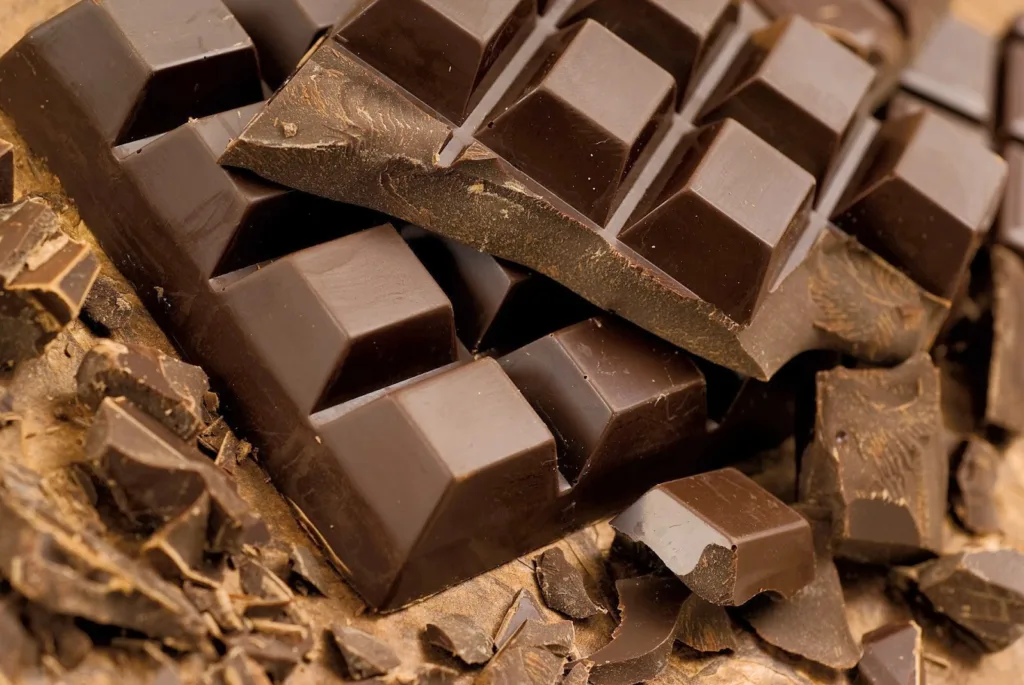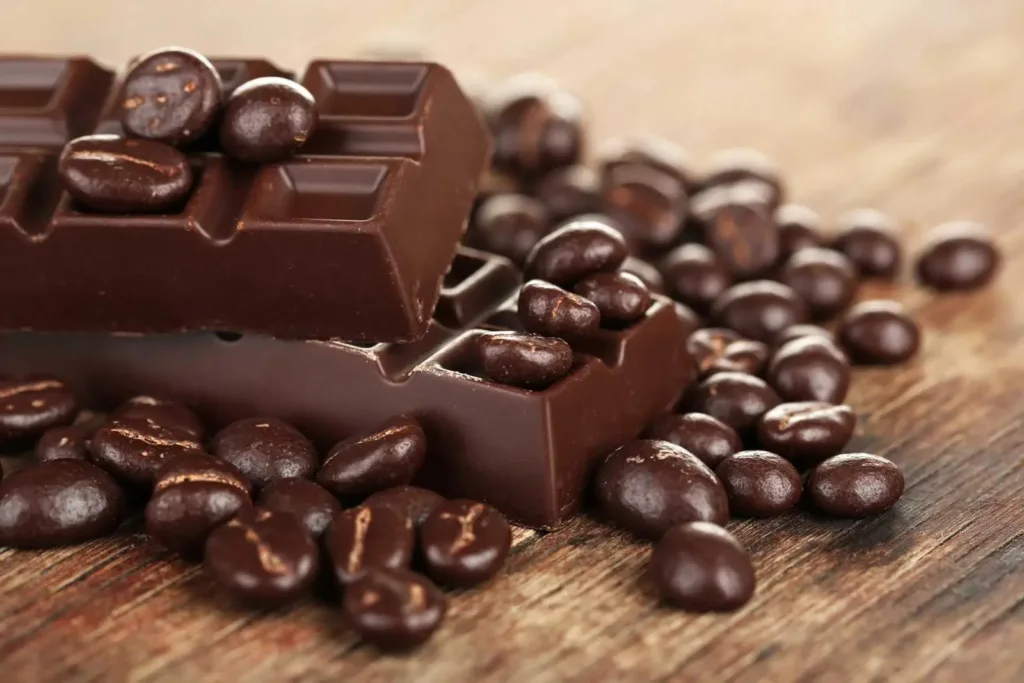Introduction
Hook: Unveiling the Sweet Secret to Weight Loss
For many seeking to lose weight, chocolate is often seen as a guilty pleasure to avoid. However, emerging research shows that not all chocolate should be banished when trying to shed pounds. In fact, chocolate in its purest form may actually promote weight loss when consumed mindfully. This delectable ingredient, once vilified for its high calorie and sugar content, is unveiling itself as an unlikely weight loss ally.
The Science of Chocolate and Weight Loss: Exploring the Connection
Chocolate’s potential weight loss benefits stem from one of its main components: cocoa. Cocoa contains powerful antioxidant compounds called flavonoids, which studies link to reduced risk of heart disease, improved blood flow, and other benefits. Dark chocolate with higher cocoa content also provides fiber, magnesium, and other nutrients. These components may promote feelings of fullness and curb cravings. Additionally, the naturally occurring stimulants like caffeine in cocoa may boost metabolism. When reaching for chocolate, opting for varieties with higher cocoa percentages can offer these perks.
The Allure of Chocolate: Why We Can’t Resist It
Chocolate holds an irresistible allure. Its creamy, decadent taste satisfies cravings like nothing else. There are several reasons why chocolate tempts us: it contains subtle stimulants like caffeine and theobromine that provide a mood boost; its velvety texture that melts in our mouths releases “feel good” endorphins; and it taps into fond childhood memories. Additionally, chocolate shares addictive qualities with drugs, activating regions of the brain linked to craving and pleasure. Understanding chocolate’s hold over us is key to consuming it in moderation.
Debunking the Chocolate Myth: It’s Not Always an Enemy
For years, chocolate was made out to be dietary villain due to its sugar and calories. However, this perception is beginning to change in light of recent research. While chocolate bars high in sugar and low in cocoa should still be avoided, enjoying quality dark chocolate in moderation may impart some health benefits. The key is mindful consumption, savoring just a few squares at a time instead of mindlessly devouring a whole bar. Additionally, swapping milk chocolate, which is lower in cocoa and antioxidants, for darker varieties is advised.
Setting the Stage: How to Incorporate Chocolate into Your Weight Loss Journey
If you have a significant amount of weight to lose, completely restricting chocolate and other sweets may help initially. But for long-term success, allowing yourself to enjoy treats like chocolate in moderation is key to sustainability. By choosing dark chocolate with 70% cocoa or higher and limiting your intake to a square or two a day, you can incorporate chocolate into your weight loss journey. Pair it with fruit, nuts, or avocado to balance its sweetness with healthy fats and fiber. With mindful consumption and smart choices, chocolate can be part of a lifestyle that helps you achieve your health goals.

1. Cocoa Content Matters: Choosing the Right Chocolate
The Dark Side of Chocolate: Benefits of High Cocoa Content
When selecting chocolate for weight loss, cocoa percentage is key. Dark chocolate with a higher percentage of cocoa (70% or more) contains more beneficial compounds like flavonoids and less sugar than milk chocolate. Studies show that flavonoids in dark chocolate may lower blood pressure, improve blood flow, and decrease inflammation. Dark chocolate also tends to be more filling. Ultimately, the darker the chocolate, the greater potential it has to aid weight loss when consumed in moderation.
Milk vs. Dark: Why Dark Chocolate Reigns Supreme
Comparing nutritional values shows why dark chocolate is superior to milk chocolate for weight loss. A 1.5 ounce milk chocolate bar contains about 600 calories and 24 grams of fat compared to 250 calories and 15 grams of fat in the same amount of 85% dark chocolate. Milk chocolate also has little fiber, protein, and over double the sugar content of quality dark chocolate. The high sugar, low cocoa content of milk chocolate provides little nutrition. Thus, darker varieties with higher cocoa should be chosen for health and weight loss.
Beyond Dark: Exploring Chocolate Varieties and Their Impact
Dark chocolate comes in many cocoa percentages and varieties. Unadulterated chocolate with no added sugar or fillers provides maximum benefits. Single origin chocolate highlights cocoa from one region, offering distinct flavors. While most studies use chocolate with at least 70% cocoa, the highest you can tolerate is ideal. White chocolate, made with cocoa butter but no cocoa solids, is not recommended, while bittersweet and semisweet contain less sugar than milk chocolate. Ultimately, read labels and choose the darkest, least processed chocolate within your taste preferences.
2. Portion Control: Savoring Chocolate Mindfully
The Art of Mindful Eating: Applying It to Chocolate
Portion control is vital to incorporate chocolate successfully into a weight loss plan. Mindful eating practices help keep portions in check. This involves slowing down, paying attention to the chocolate’s smell, taste, and texture, and truly savoring each bite. Turn off distractions, pause between bites, notice signs of fullness, and avoid mindless snacking. Embracing mindful eating transforms chocolate from an addictive substance into a conscious indulgence.
Chocolate and Portion Sizes: Finding the Perfect Balance
When starting out, limit chocolate to one small square (about 1 ounce) per day then gradually increase portion sizes to find the ideal amount that satisfies you without overdoing calories. Whether enjoying it as a snack or dessert, consume chocolate thoughtfully, preferably with fruit like strawberries or raspberries which provide fiber, vitamins, and antioxidants. Pair it with nuts or avocado for healthy fats to increase satisfaction. Choose a high quality chocolate you love so one or two small squares satisfies your craving.
Daily Indulgence vs. Occasional Treat: What’s Ideal?
Opinions differ on whether it’s better to have a small, daily chocolate treat or indulge in a larger portion a few times a week. The most important thing is figuring out the approach that works best for you and your goals. Having a small treat daily may help satisfy cravings and prevent binging, but occasionally having a larger portion may feel more satisfying. See what is most sustainable and be flexible; you don’t have to take an all-or-nothing approach. The key is moderation and mindfulness.

3. Chocolate Recipes for Weight Loss
Chocolate Smoothies: A Guilt-Free Morning Delight
Blending cocoa powder into a morning smoothie is an easy way to add chocolate’s benefits into your diet. Use 1 tablespoon of unsweetened cocoa powder per smoothie. Combine it with banana, berries, avocado, yogurt, milk or a vegan alternative like almond milk. The other ingredients provide fiber, protein and nutrients that create a balanced, satisfying beverage. A chocolate smoothie can be a healthy part of your breakfast or snack routine.
Chocolate-Covered Fruits: Healthy Snacking Redefined
For a nutritious snack or dessert, melt a few squares of dark chocolate and drizzle it over fruits like banana halves, orange segments, or fresh berries. The sweetness of fruit balances the bitter cocoa taste beautifully. Choose fruits high in fiber like berries or apples to provide volume and vitamins. Just an ounce of chocolate with a cup of fruit makes a fiber and antioxidant-rich snack under 250 calories. Get creative with your own fruit and chocolate pairings.
Cocoa in the Kitchen: Cooking Up Delicious and Nutritious Meals
Don’t stop at snacks and desserts. Incorporate cocoa into entrées for an antioxidant boost. Mix cocoa powder into oatmeal or quinoa for breakfast. Blend it into sauces for chicken or fish. Add cocoa into chili or curries for richness and complexity of flavor. You can even sprinkle cocoa nibs, or roasted cocoa beans, onto meals for a satisfying crunch. Dairy-free dark chocolate works in smoothies or nice cream too. Be creative and cocoa will enhance many dishes.
4. Combining Chocolate with Superfoods: A Winning Combination
Chocolate and Berries: A Power-Packed Duo
Berries deliver ample fiber, vitamins, and antioxidants. Paired with dark chocolate, they make a nutritional power couple. Try dipping strawberries or raspberries in melted chocolate or make chocolate-covered blueberries. Blend cocoa powder into your berry smoothies or oatmeal. For an impressive dessert, layer chocolate mousse with mixed berries. Just be mindful of portions when pairing these two superfoods.
Nuts and Chocolate: A Crunchy, Healthy Affair
Nuts offer protein, fiber and healthy fats that promote satiety. Pairing them with chocolate delivers additional antioxidants and makes a satisfying snack. Try almonds, peanuts, hazelnuts, or walnuts dipped in dark chocolate or make homemade chocolate peanut butter cups with cocoa powder. Sprinkle nuts onto chocolate nice cream or blend them into chocolate smoothies. Just watch portion sizes since calorie counts can climb quickly.
Chocolate and Avocado: Creamy and Nutrient-Rich Delights
Avocados offer heart-healthy fats and creaminess that pairs deliciously with chocolate’s richness. Blend cocoa powder into chocolate avocado smoothies or mousse for healthy fat and fiber. Make chocolate avocado truffles by scooping avocado into melted dark chocolate with a dash of honey for sweetness. Top your avocado toast with shavings of dark chocolate for an antioxidant boost. Just don’t overdo the chocolate, since calories add up quickly.

Conclusion
Savoring Success: How Chocolate Can Be Part of Your Weight Loss Journey
Research continues to unveil the health benefits of quality dark chocolate. When mindfully savored in moderation, chocolate can be incorporated into a lifestyle focused on weight loss and wellness. Pay attention to portion sizes, choose varieties with 70% cocoa or higher, and pair chocolate with other superfoods like berries and avocados. Let chocolate help satisfy cravings so you can stay on track with your goals. By being a mindful, moderate chocolate consumer, you truly can have your chocolate and lose weight too!
Embracing Moderation: The Key to Chocolate’s Role in Health
Chocolate is here to stay. For chocolate lovers aiming for better health and weight loss, demonizing chocolate is not the answer. Having a mindset of permanent deprivation inevitably leads to binging. Instead, it’s about building a healthy relationship with chocolate through education and moderation. When consumed mindfully in appropriate portions, quality dark chocolate can be part of an overall balanced diet and lifestyle. Making this small shift to become a thoughtful chocolate consumer is beneficial for both your health and your happiness.
A Sweet Farewell: Parting Thoughts on Weight Loss and Chocolate
While chocolate alone won’t make you magically lose weight, incorporating it wisely along with an overall healthy diet and active lifestyle can support your journey. Be adventurous and find fun ways to pair chocolate with other superfoods like avocados, berries, nuts, yogurt and more. Enjoy the decadence and flavors chocolate brings to meals and snacks while still hitting your nutrition targets each day. Losing weight doesn’t mean depriving yourself forever. With balance and moderation, achieving your goals and indulging in life’s pleasures can go hand-in-hand.

Reader Engagement
Subscribe to our free newsletter: Stay updated with the latest in nutrition, health, and weight loss by subscribing to our newsletter. Don’t miss out on expert tips and delicious recipes!
Read related posts regarding food, nutrition, health, wellness, and weight loss: Explore more informative articles on our website to help you on your journey to a healthier you.
Thank you for reading this post, don't forget to subscribe to our free newsletter
!
